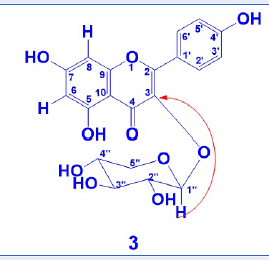
Phenolic compounds from the leaves of Ricinus communis Linn.
- Faculty of Environmental Science, Sai Gon University, Ho Chi Minh City
- Luong Van Can High School, Ho Chi Minh City
- hong Nhat High School, Binh Phuoc Province
- Institute of Tropical Biology, Vietnam Academy of Science and Technology, Ho Chi Minh City
- Department of Nature, Dong Nai University, Dong Nai Province
- Institute of Chemical Technology, Vietnam Academy of Science and Technology, Ho Chi Minh City
- Ho Chi Minh University of Education, Ho Chi Minh City
Abstract
Introduction: Ricinus communis Linn. (Castor oil plant) is a monotypic species of Ricinus genus (Euphorbiaceae) and widely distributed in all tropical countries. Phytochemical data of this plant are scarce. As part of ongoing research on a survey of Vietnamese medicinal plants, the investigation of this plant was performed. The isolation and structural determination of five phenolic compounds isolated from the leaves of R. communis Linn. growing in Binh Phuoc province were addressed.
Method: The dried power of R. communis Linn. leaves was macerated in ethanol to afford the crude extract, which was then separated by liquid-liquid extraction with n-hexane, chloroform, and ethyl acetate, respectively to obtain the corresponding extracts. These extracts were applied to multiple silica gel column chromatography and thin-layer chromatography to yield five compounds. Their chemical structures were determined by spectroscopic methods and by comparison of NMR data with literature values. Antioxidant evaluation of 1 was carried out using 1,1-diphenyl-2-picrylhydrazyl radical (DPPH) free radical scavenging assay.
Results: Five phenolic compounds, including one coumarinolignan cleomiscosin A (1), two flavonol glycosides kaempferol-3-O-β-D-glucopyranoside (2) and kaempferol-3-O-β-D-xylopyranoside (3), and two aromatic acids gallic acid (4) and vanillic acid (5) were identified.
Conclusion: Compound 1 was determined for the first time in Ricinus genus and exhibited weak DPPH radical scavenging activity with an SC50 value of 403.23 μg/mL.

